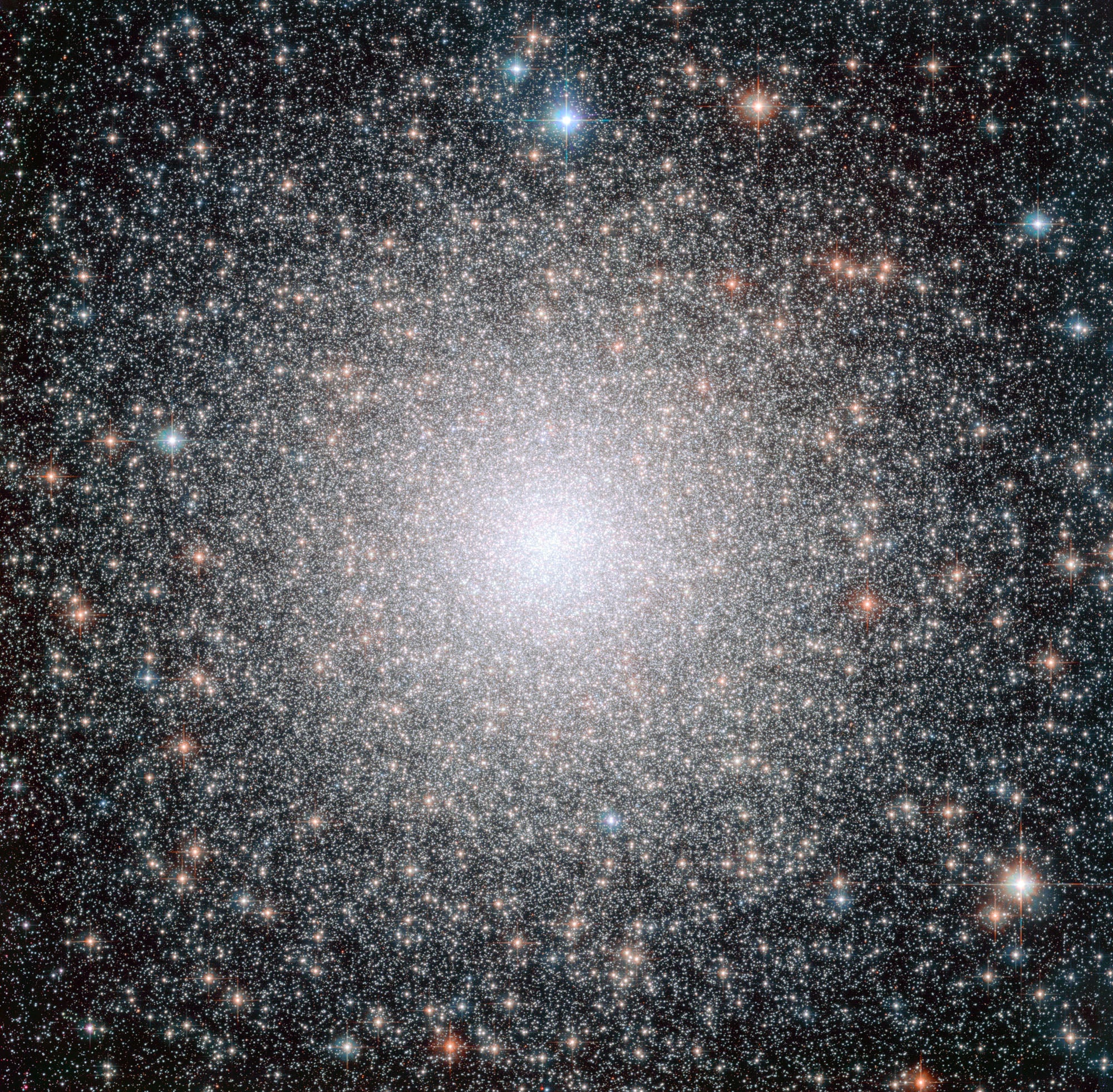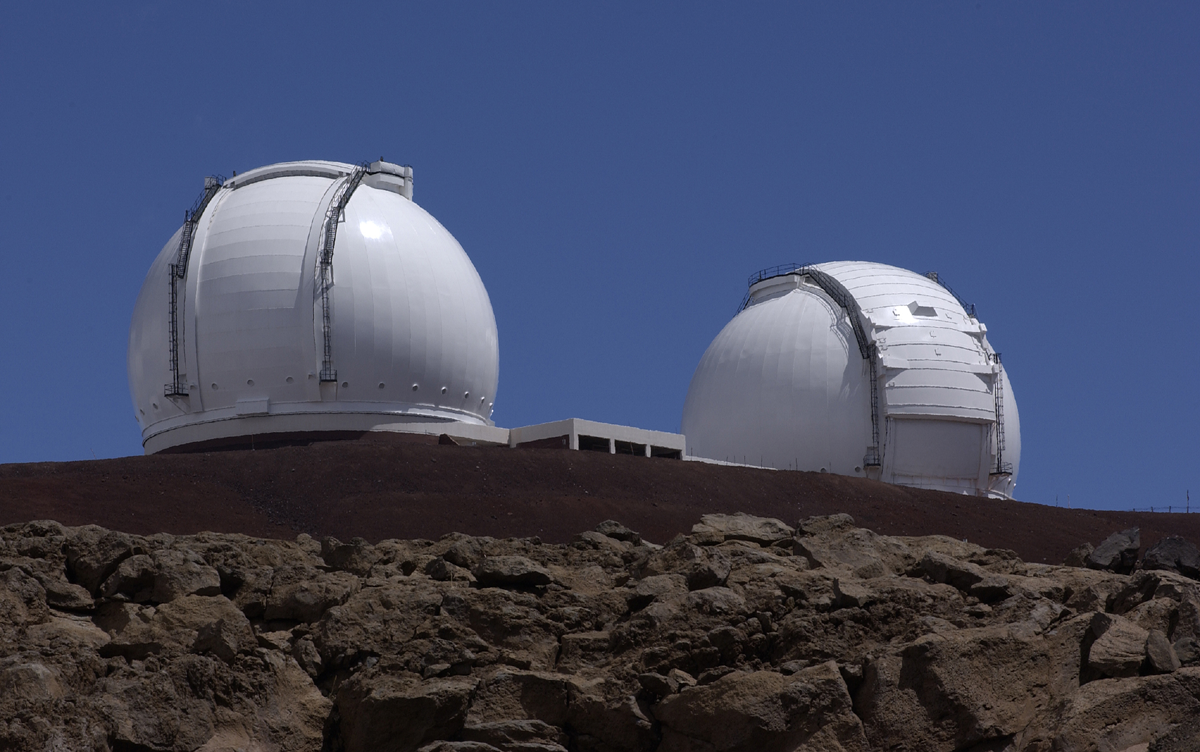Globular clusters offer delicious evidence of dark matter
ListenHubble discovers a globular cluster cluster – 2.25 billion light years from earth in a cluster of galaxies called Abell 1689. Globular clusters are the earliest inhabitants of galaxies forming 1 to 2 billion years after the Big Bang 13.8 billion years ago, and this discover sheds light on the amount of dark matter that provides ‘scaffolding’ for the cluster architecture. Meanwhile, back on terra firma, plans are proceeding to build a 30 meter telescope – next big instrument for Mauna Kea observatories.
September 23, 2013
[Dave Heller] Though astronomers have yet to see so-called dark matter, Hubble Space Telescope is peering into the past to provide new evidence of its proliferation in the cosmos. Joining me to shed light is Derrick Pitts, chief astronomer at the Franklin Institute. Derrick, let’s take a trip way back in time.
[Derrick Pitts] We’re really using indirect evidence to give us some hint as to what the early structural substance of the universe might have been like including dark matter. As a sort of scaffolding, if you will, for how the rest of the matter may have been built at that time.
So this is pre-galaxies?
Well, this is very, very early on. This is probably two billion years or so after the big bang itself when structures in the universe are just beginning to form. And specifically we’re speaking of these structures called globular clusters.
Ooh, tasty.
Yes, they’re pretty good with a glass of milk. Globular clusters actually are these enormous collections of stars all bound together by gravity. Now I know it sounds like a galaxy, but they’re really very much like balls of stars. The numbering and ordering of 100,000 stars or so all held together by gravity. They don’t orbit a central nucleus in the sense that galaxy does. And of course we have to think of a galaxy in different terms because the number of stars in a galaxy is on the order of many billions or hundreds of billions. So this, in comparison to a galaxy, is small. But it’s one of the earliest inhabitants of a galactic structure that we would think of in terms of the early universe.
“Globular clusters actually are these enormous collections of stars all bound together by gravity. Now I know it sounds like a galaxy, but they’re really very much like balls of stars. The numbering and ordering of 100,000 stars or so all held together by gravity. They don’t orbit a central nucleus in the sense that galaxy does.”
Derrick Pitts
-

The globular cluster NGC 6388, observed by Hubble
So Hubble honed in on one of these?
What Hubble actually did was, looking out toward the earliest history of the universe, the most distant views possible, way out near the outer edge, way back in time, one can’t see individual galaxies, one can see clusters of galaxies. And in observing one particular cluster, Abell 1689, Hubble was able to identify at the center of this cluster of galaxies a cluster of clusters of globular clusters, if you will. So instead of seeing just the globular cluster arrangement of one galaxy, and typically one galaxy could have, you know, 100 globular clusters or so, maybe 150 or so as our galaxy does, it was seeing an enormous number of globular clusters — the cluster of those clusters of that group of galaxies.
Now that’s interesting architecture indeed. So what of this notion of scaffolding that gives us evidence of dark matter?
Well the thought is that as these clusters of globular clusters exist, what they do is they sort of define or map out where dark matter can be found among the clusters of galaxies. And as you move away from the center of this cluster of galaxies, as the number of globulars decrease, a relationship has been seen in which the density of the dark matter also decreases. So this potentially could be a way for astronomers to map the location of dark matter without actually seeing it among clusters of galaxies.
Can we extrapolate then to what role dark matter plays now in the universe?
Some 96% of the matter of the universe is tied up in dark matter, and the remaining 4% is just the “normal matter” that we see of the stars, galaxies, planets and us. So we know it plays a major role because it is most of the galaxy in mass.
So even the mighty Hubble though — soon to be retired — could only discern these clusters of clusters, rather than individual stars, say.
Well when you’re considering how far away we’re looking — so in this case we’re looking 11 to 12 billion light years out — when you get out at that distance, of course, the size of the telescope is what really makes the difference as far as what you can see. And even though Hubble space telescope has a mirror 85 inches in diameter, it’s above the Earth’s atmosphere, the difficulty is that it’s STILL a very, very long way away and the light that’s being detected is so incredibly faint and feeble, it’s VERY difficult to make any real clear separation of even the clusters themselves. So what we’re actually seeing are these gigantic strings of clusters of galaxies that make up the structure of the universe as we can detect it that far out.
So let’s go from 85 inches to 30 meters. There’s a telescope out on the docket of Hawaii — what will that be able to show us?
Well here’s a really interesting change from Hubble space telescope, which has done so well as a space telescope over the last two decades. As capable as it is, it does have its limitations. First of all is the size of the mirror; 85 inches, although a good size, not very big when you compare to ground-based instruments. I mean we can start with the Keck telescopes on Mauna Kea — those are 10 meter instruments, and those are pretty big in comparison to the Hubble space telescope. Hubble space telescope is 85, the Keck are what, nearly 400 inches! That’s gigantic in comparison. However, next to come at Mauna Kea Observatory is a 30 meter telescope, fully three times the size of the Keck instruments. And the doors that this will open as far as our ability to better understand the role of dark matter in the universe is absolutely staggering when you think of it. Because with that much capability, we will be able to see much farther back in time and in much greater detail than has ever been capable to see before.
-

Keck Telescopes. Photo credit: Wikipedia
Three times the size but much more than three times the resolution.
The resolution is 10 to 100 times better than any other telescope, depending on the type of observation that’s being done. So not only will the telescope be able to look at this great distance and understand more about the originating edge of the universe, if you will, but it will also be able to do so much more with identification and study of extra solar planets, not only in our galaxy but possibly in other galaxies. Even to the point of being able to look spectroscopically at the atmospheres of these planets and help to make determinations about the compositions of these atmospheres.
WHYY is your source for fact-based, in-depth journalism and information. As a nonprofit organization, we rely on financial support from readers like you. Please give today.




